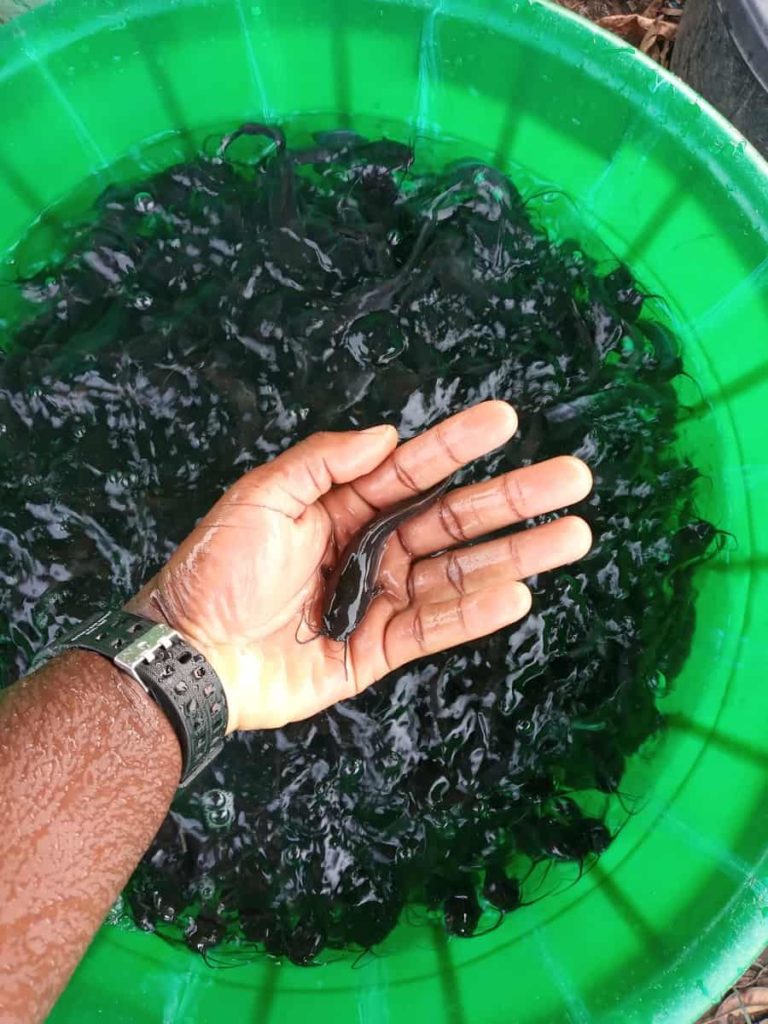Fish farming is very profitable. Fish farming is a good retirement activity. Catfish farming remains the most significant part of US aquaculture, and US Catfish farmers have demonstrated flexibility and resources to adapt to changing economic conditions. Most Catfish are produced in the south, in Mississippi, Alabama, and Arkansas. It is raised in earthen ponds filled with water from the southern delicacy well and is fed floating, grain-based food.
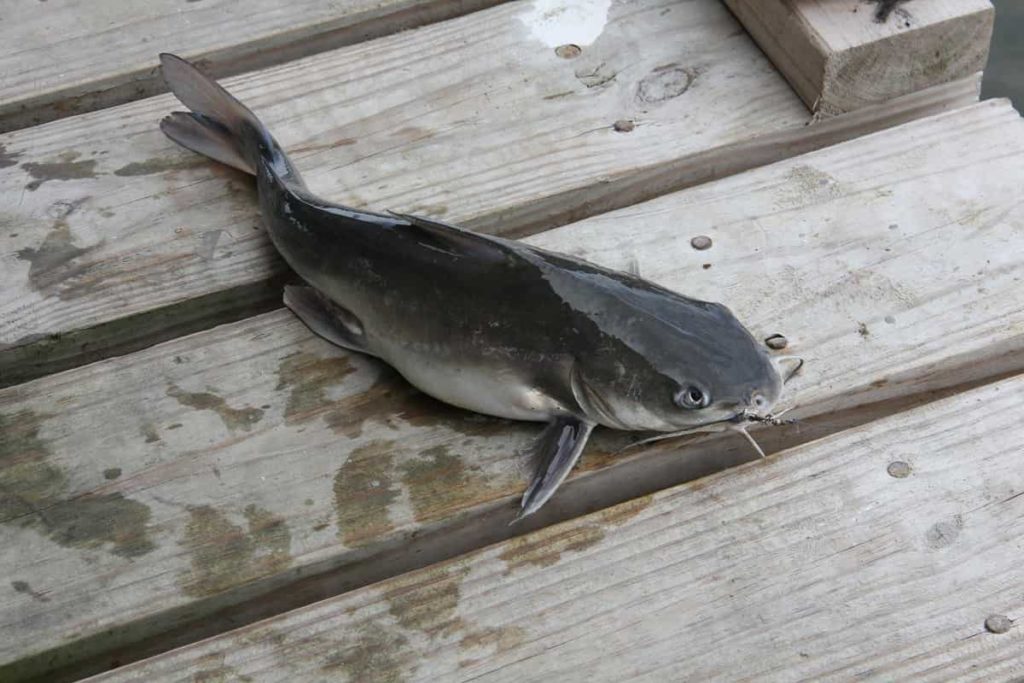
Catfish have a mild flavor and are low in calories and protein. Based on the National Statistics Service, 471,683,000 pounds of Catfish produced on US farms fetched farmers an average price of $ 0.861 per pound. Additional Catfish is processed locally or sold for pond storage and pay lakes. Let’s check out more information about Catfish Farming in USA below.
Catfish species in the USA
Channel Catfish
The most commonly cultivated Catfish species in the USA is the Channel Catfish. The Chanel Catfish makes up 90% of the Catfish produced on American farms. They are the most important species of aquatic animals commercially cultivated in the United States. The Channel Catfish is the most abundant species of Catfish in North America. Every year, millions of anglers go out in search of these fish. They are the state fish of Iowa, Kansas, Missouri, Nebraska, and Tennessee.
Chanel Catfish are smaller species of Catfish than blue Catfish or flat-headed Catfish. They rarely weigh more than 40 pounds. The length is often around 24 inches. The Channel Catfish is warm water with a temperature of 29°C. In cultural ponds, fish are fed a complete diet, usually consisting of soybean meal and other seeds or cereal products, which contain small amounts of animal protein.
North American Catfish
The North American Catfish family includes a species called the “Billheads.” They are Brown Bullhead, Yellow Bullhead, and Black Bullhead. All are the same in appearance, with some physical differences and colors. Yellow Bullhead’s natural range is the Atlantic and Gulf coastal waterway from New York to northern Mexico. Yellow Bullheads are also widely stored. Although it is found in all watersheds in Pennsylvania, the Yellow Bullhead is not much like the Brown Bullhead.
Blue Catfish
The Blue Catfish (Ictalurus furcatus) is larger than the Channel Catfish and has smaller heads and a higher percentage of edible meat. However, they take longer to grow, and they mature later. Blue Catfish is the largest breed of Catfish in the United States. The blue Catfish is a very long fish. They can grow to a length of 60 inches or more.
The belly of the blue Catfish will be silver and white. The rest is gray or slate blue, hence the name. They do not have moderate but deep thorny tails and flat dorsal wings. They also have four pairs of prominent whispers around their mouths.
In case you missed it: Common Mistakes Everyone Makes in Fish Farming
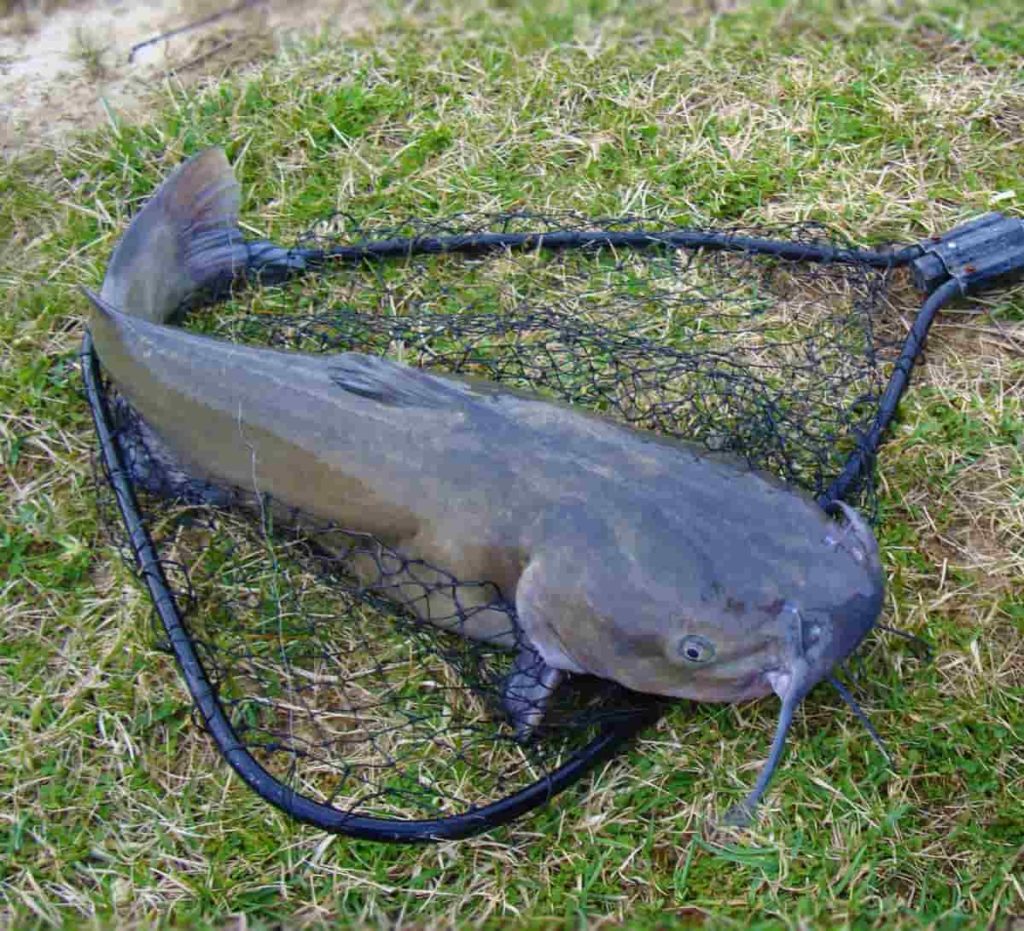
Hybrid Catfish
It is a cross between Channel and Blue Catfish.
Leading Catfish producing states in the USA
The leading catfish-producing states in the USA are Alabama, Arkansas, California, Georgia, Louisiana, Mississippi, Missouri, North Carolina, and Texas.
Catfish production in USA
Catfish are mostly grown in earthen ponds, usually 5 to 10 acres, in relatively small numbers in cages and raceways. A new production system, a distribution pond system developed at Mississippi State University, has improved yields, and farmers are beginning to incorporate these systems into their fields. Most Catfish are raised in more than one batch. Ponds are left without drainage for years as waste is removed from the ponds through natural processes.
In single batch production, fingerling Catfish are stored and reared until almost all the fish have reached market size, the whole fish pond is cut together, and then the pond. In Catfish feed production, ground feed components are mixed and sent through an extruder, causing the feed pellets to float. Farmers use a truck or trailer hopper with a crystal that shoots feed pellets into the water to feed the fish.
In this way, the feed response to the fish is easily monitored to ensure that the fish gets enough food, not too much. The amount of dissolved oxygen in Catfish ponds will decrease at night during the growing season, and farmers use aerators (usually electric paddle wheels) to increase the level of oxygen in the water. US Catfish production has declined in recent years, partly due to competition with the Catfish pangasius species, imported from Vietnam and Basa, Tra, and under the name of Sawai.
Also, some Channel Catfish fillets are imported from China and Indonesia. Imported tilapia products also appear to be competing with Catfish in some markets. Higher feed prices also increased production costs, especially since the feed has a high operating cost. The recent increase in prices paid to farmers for Catfish has made Catfish culture profitable again. Farmers are increasing production to meet the shortage of Catfish produced by American farms.
In case you missed it: Earning 1 Lakh Per Month From RAS Fish Farming: A Success Story From India
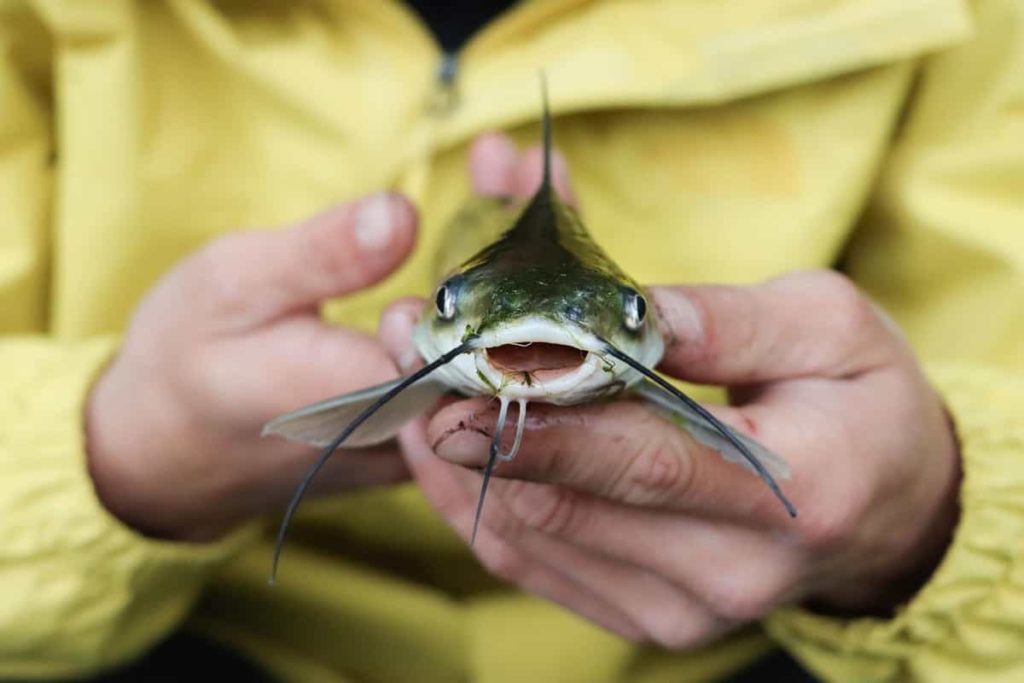
US farm-raised Catfish
US Farm-Raised Catfish is raised in environmentally controlled, clay-based ponds filled with fresh water pumped from underground wells and filtered through irrigation. The average pond, built from above ground level to act as a natural barrier, covers an area of 10 to 20 acres and is 4 to 6 feet deep. Fish are fed a high-protein pellet that floats on water in a scientifically prepared diet.
The US Farm-Raised Catfish is subject to the Hazard Analysis & Critical Control Point Program (HACCP) and is inspected at processing plants by the US Department of Commerce before it can carry the seal of certified processors. It confirms that it has met the highest standards set by the Catfish Institute.
How are US Farm-Raised Catfish Raised?
It is known for its consistency. Achieving this consistency begins with the selection and blending of adult Catfish. Adult Catfish live in production for an average of about 4 to 6 years and lay 3,000 to 4,000 eggs per pound of body weight per year. They are collected and then taken to hatcheries to replicate the natural environment conditions.
The eggs hatch after seven days and move on to the next level of maturity, known as “fry,” because of the yolk sacs that provide them with food. Soon, Catfish picked up from a small American farm begin to swim and are taken to special ponds, where they take the shape of fingerlings. When the fingerlings are 4 to 6 inches long, they are placed in man-made ponds filled with fresh water from underground wells.
After 18 months to two years, Catfish from US farms reach about 1 pound; they are harvested with seines, which means large weighted nets and loading baskets, then air-powered. Tanks are transported in trucks to processing plants. Once the US Farm-Raised Catfish reaches the plants, the production process takes less than 30 minutes, making the high-quality US Farm-Raised Catfish one of the latest available fish.
Catfish are cleaned, processed, and placed on ice or frozen below zero to 40°C. Preserves taste and quality. Catfish from US farms are then sold pre-cooked in whole fish, steaks, fillets, strips, and nuggets, as well as marinated and pre-cooked or frozen dinners.
Mississippi is the leading Catfish producer in the USA
Mississippi Delta became the industry home of the Catfish industry, as they had the soil, climate, and shallow aquifers to supply water to the mud ponds at an annual cost of 360-380 million pounds (160,000 to 170,000 pounds). Fish are fed with floating pellet feed at 1-6% of body weight daily during summer. Mississippi is home to 100,000 acres (400 km2) of Catfish ponds, the largest in any state.
Other states important in Catfish farming include Alabama, Arkansas, and Louisiana. The Catfish industry generates billions of dollars in economic impact and is a major source of economic activity and employment in many Mississippi counties. There are two major Catfish producing areas in Mississippi:
- The relatively well-defined geographical area of the Alluvial Valley of the Mississippi River in northwestern Mississippi, commonly known as the “Delta” and
- The less well-defined East-Central Mississippi
The Delta covers most of the Mississippi’s total land area for Catfish. The land is remarkably flat at 100 to 150 feet above sea level. Most Catfish ponds in the region are built on soils with high soil content. Water is pumped from the Mississippi River Elevator Aquifer to fill the Catfish ponds. The depth of the well is 50 to 250 feet. The availability of topography and high-yielding groundwater is ideally suited for constructing “embankment” or “levee” ponds.
After the ponds are initially filled with groundwater, the water level is maintained by precipitation and pumped water inputs. Most Catfish ponds in eastern Mississippi are located in the western part of the Blackland Prairie soil area, ending just south of Montgomery, Alabama, near Columbus, west of Mississippi, and Tupelo in northeastern Mississippi.
These soils also have a higher soil content but differ from delta soils because they often cover soft limestone, chalk, or marl. The elevation is 75 to 300 feet above sea level, and the land is almost flat to medium slopes.
In case you missed it: Fish Farming in USA: How to Start, Breeds, Business Plan, and Guide for Beginners
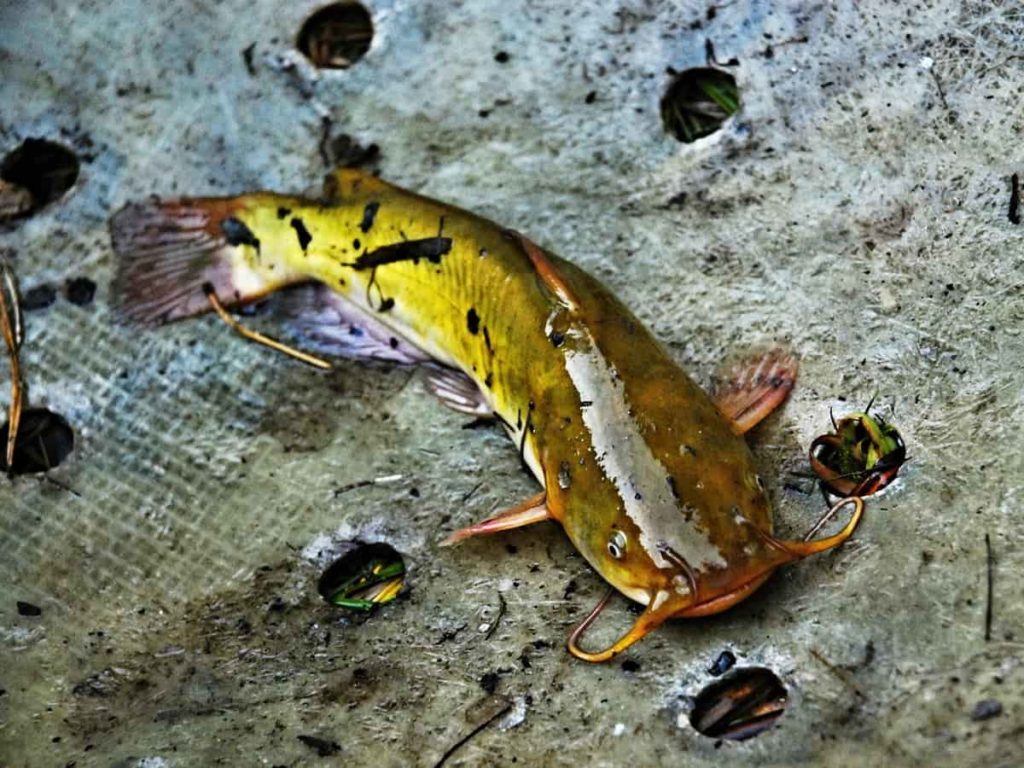
A step-by-step process for Catfish farming in USA
Step 1. Secure financing
According to the University of Texas A&M, starting Catfish fisheries costs up to $ 2,970 per acre, assuming you already have land and have no farm vehicles or aquaculture equipment. You can get financing from banks, credit unions, and investors. Getting aquaculture grants or financial assistance from the US Department of Agriculture.
Step 2. Get land for Catfish farming
The pond’s location should be accessible to vehicles, made of mud, free of silt, 4 to 6 feet deep, and with a slight slope below. A good starting size for Catfish ponds is 1 to 5 acres.
Step 3. Right conditions for Catfish farming
Catfish farming can be very profitable under the right conditions. Like other farming types, Catfish production involves significant investment and many risks. If you are considering Catfish farming, this checklist can help determine if the Catfish enterprise is viable for your specific situation.
Farmers spend much time, care, and money on proper Catfish rearing. On average, it takes about 18 months to two years for an American farm Catfish to grow from 1 to 1.5 pounds of fish. In the Deep South, many Catfish farms are family-owned businesses operating in the industry and have been developing their methods for generations. The dedication of these farmers is reflected in the high-quality results of their Catfish.
Larger farms can take advantage of larger economies, resulting in lower production costs per unit, and profit margins are usually found in smaller operations. However, large farms usually sell a large portion of their produce to processors and receive wholesale prices for their Catfish.
Step 4. Make a pond for Catfish framing
Ponds are built on clay-rich soils filled with fresh water extracted from underground wells. Rectangular ponds are built with levies on the ground, averaging 10 to 20 acres each. These embankments contain water reaching a depth of 4 to 6 feet.
If there is already a pond on the ground, you can use it for fishing. Otherwise, you must dig the ground to remove the topsoil and vegetation and make a pond using the subsoil. Install water supply and drain lines and cover them with good-quality soil. At this time, also install oxygen meters, agitators, and aerators.
Step 5. Fill the pond with Catfish
The number of Catfish species to stock in your fish pond depends on its size, the air system you have installed, your level of experience with aquaculture, the size of your market, and the amount of business risk you accept. For new Catfish farmers, it’s best to start with more than 6,000 fish per acre and grow with experience.
To help ensure the Catfish’s health, buy vaccinated fingerlings you have tested for diseases from an independent laboratory. Before putting your fingerlings in the pond, warm the water in their transport tanks with the pool water so they are not under pressure from the water change.
In case you missed it: Basic Equipment and Tools Required for Fish Farming: A Beginners Guide
Step 6. Feed the fingerlings
In addition to improving feed conditions, the big difference between American farm-raised Catfish and its wild cousins is what they eat. These delicacies are served with puffed, high-protein food pellets made from soybeans, corn, wheat, vitamins, and minerals. The farm-raised Catfish has learned to feed on pellets that float on top of the pond, unlike its cousins that feed on the bottom of the wild. This feed helps to produce healthy fish and clean, light-tasting fish.
Catfish feed is based on grain, with soybean meal at approximately 20% ration, corn grain at 15%, gluten feed at 20%, wheat middlings at 5%, cotton seed meal at 20%, and distillers. Small amounts of dried grains, fats/oils, lysine HCL, phytate enzymes, vitamin premix, and trace mineral premix. Every small fish eats 3% of its body weight daily—store food in feed containers that you keep in a cool, dry place.
Step 7. Harvesting the fish
Depending on your buyers’ preferences, harvest Catfish when it weighs 0.75 to 4 pounds. Use a net and a seine to harvest the fish.
Catfish farming in Texas
Catfish can be grown in ponds, cages, and raceways, but more than 95% of all Catfish are bred in mud ponds. Channel Catfish need warm water for good growth. 26 to 29°C is the best temperature, although some growth occurs at temperatures as low as 15°C. All areas of Texas are suitable for commercial Catfish production.
Northeast Texas has about 200 days yearly when the water temperature rises above 15°C, while South Texas has more than 320 days. Due to other factors being equal, the longer the growing season, the higher the annual production and return on investment. The future of Catfish farming in Texas is a bright and profitable business.
The climate of Texas is almost ideal for production, and more Catfish are eaten in Texas than in any other state. Challenges include uncertain markets, taste control, water quality management, bird hunting, harvesting difficulties, disease management, and drainage regulations. Although the risks are not very different from those of other agricultural enterprises, managing Catfish production takes much more time and effort.
Catfish marketing in the USA
Marketing costs will vary depending on the farmer’s resources, location, and personality. Local information is essential for the success of a small operation. A business based on the local sale of fresh fish can be a lucrative project. If a small processing facility is nearby, it is possible to contract the processing or sell the plant. Otherwise, consumers will have to market directly to the end.
Direct marketing requires interaction with consumers, and successful direct marketing requires someone who enjoys dealing with the public. Options include fishing, pond sales, farmers’ markets, community-based agricultural projects, and more. Profitable businesses of any size need careful analysis and planning. The situation of each form is different, so the budget presented here is designed as a template for the types of costs and expected profits.
The sample budget shows the specific costs of the Delta area in Mississippi and Arkansas. Costs may vary in other US regions. Individuals should make an objective and critical assessment of their resources and capabilities before drawing any conclusions about the potential profitability of the business. Profit is earned when the farmer sells Catfish at a price higher than the cost of production.
In case you missed it: Catfish Farming Information Guide
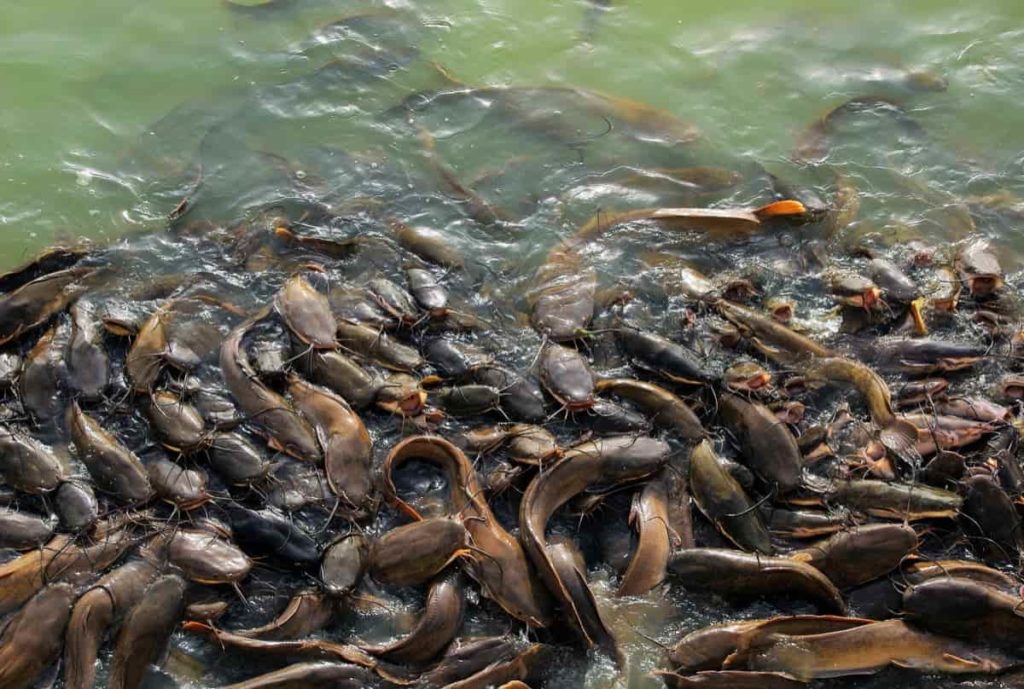
Therefore, although this includes the cost of production, prospective farmers should consider all the costs incurred in selling fish, including marketing costs. The two main options for selling Catfish are to sell the processing plant or sell it directly to consumers. If there is a small, local processing facility, it may be possible to contract for customized processing services on a per-pound basis. Wholesale prices typically range from $ 0.30 to $ 0.40 per pound, lower than consumers’ retail prices.
Catfish farms in the United States
More than 650 registered Catfish farming businesses, processing plants, fish markets, and seafood restaurants harvest, process, sell, and serve Catfish in the United States.
Conclusion
Catfish tops the aquaculture industry in the United States. Commercial Catfish production accounts for more than 27% of the value of aquaculture production in the United States. Catfish farming is a major aquaculture business in the United States. Catfish is the “king” of US aquaculture in terms of pound production and total value. The above steps will be more helpful in starting Catfish farming in the USA.
- Economical Aquaculture: A Guide to Low-Budget Fish Farming
- 15 Common Planting Errors That Can Doom Your Fruit Trees
- How to Make Houseplants Bushy: Effective Tips and Ideas
- Innovative Strategies for Boosting Coconut Pollination and Yield
- Pollination Strategies for Maximum Pumpkin Yield
- The Complete Guide to Chicken Fattening: Strategies for Maximum Growth
- Natural Solutions for Tulip Problems: 100% Effective Remedies for Leaf and Bulb-Related Issues
- Revolutionizing Citrus Preservation: Towards a Healthier, Greener Future
- Natural Solutions for Peony Leaf and Flower Problems: 100% Effective Remedies
- Maximizing Profits with Avocado Contract Farming in India: A Comprehensive Guide
- Natural Solutions for Hydrangea Problems: 100% Effective Remedies for Leaf and Flowers
- The Ultimate Guide to Choosing the Perfect Foliage Friend: Bringing Life Indoors
- From Sunlight to Sustainability: 15 Ways to Use Solar Technology in Agriculture
- The Ultimate Guide to Dong Tao Chicken: Exploring from History to Raising
- The Eco-Friendly Makeover: How to Convert Your Unused Swimming Pool into a Fish Pond
- Mastering the Art of Delaware Chicken Farming: Essentials for Healthy Backyard Flocks
- 20 Best Homemade Fertilizers for Money Plant: DIY Recipes and Application Methods
- How to Craft a Comprehensive Free-Range Chicken Farming Business Plan
- Brighten Your Flock: Raising Easter Egger Chickens for Beauty and Bounty
- How to Optimize Your Poultry Egg Farm Business Plan with These Strategies
- Subsidy for Spirulina Cultivation: How Indian Government Schemes Encouraging Spirulina Farmers
- Ultimate Guide to Raising Dominique Chickens: Breeding, Feeding, Egg-Production, and Care
- Mastering the Art of Raising Jersey Giant Chickens: Care, Feeding, and More
- Ultimate Guide to Raising Legbar Chickens: Breeding, Farming Practices, Diet, Egg-Production
- How to Raise Welsummer Chickens: A Comprehensive Guide for Beginners
- How to Protect Indoor Plants in Winter: A Comprehensive Guide
- Ultimate Guide to Grow Bag Gardening: Tips, Tricks, and Planting Ideas for Urban Gardeners
- Guide to Lotus Cultivation: How to Propagate, Plant, Grow, Care, Cost, and Profit
- Agriculture Drone Subsidy Scheme: Government Kisan Subsidy, License, and How to Apply Online
- Ultimate Guide to Raising Araucana Chickens: Breed Profile, Farming Economics, Diet, and Care
- Bringing Hydroponics to Classroom: Importance, Benefits of Learning for School Students
- Ultimate Guide to Raising Polish Chickens: Breed Profile, Farming Economics, Diet, and Care
- Ultimate Guide to Raising Australorp Chickens: Profile, Farming Economics, Egg Production, Diet, and Care
- Silkie Chicken Farming: Raising Practices, Varieties, Egg Production, Diet, and Care
- Sussex Chicken Farming: Raising Practices, Varieties, Egg Production, Diet and Care
- Homemade Feed Formulations for Livestock: Discover Cost-effective Starter to Finisher Feed Recipes
